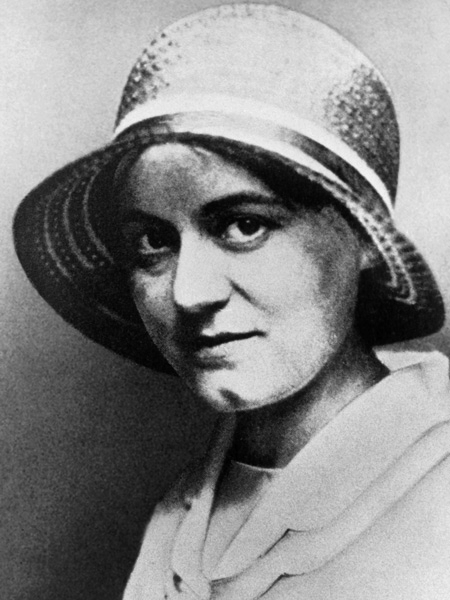Edith Stein was born to a pious Jewish family but as a teenager, she decided to be an atheist. Her new faith was discovered thanks to phenomenology philosophers and unpleasant experiences in her personal life. As a Catholic nun of Jewish origin, she became a victim of German Nazism.
Edith Stein was born on October 12, 1891, in Wrocław (today in Poland), which was then in the German Empire. She was the youngest of eleven children. Her parents, especially her mother, were devout Jews. When Edith was 2 years old her father died and her mother took over the running of the company that dealt with the timber trade. She failed to convey her zealous faith to Edith. At the age of 14, Edith stated that she did not believe in God.
After completing elementary education, Stein attended the Friedrich-Wilhelm University of Silesia in Wrocław, where she studied German philology, psychology and history. She also listened to lectures in Göttingen and Freiburg. One of her masters was William Stern – the researcher who created the IQ scale.
During World War I, she worked as a Red Cross nurse in Wrocław and Hranice (now the Czech Republic). During her lifetime, however, she returned to her hometown, where she worked as a teacher in a gymnasium where she graduated from.
On the way to Catholicism
She presented her doctoral thesis “On the issue of empathy” written under the supervision of the phenomenologist Edmund Husserl. At that time, she had already met Max Scheler, another philosopher in phenomenology. His influence caused her to believe again.In 1917 Edith Stein’s best friend, Adolf Reinach died in the trenches, during the war. This loss was a huge tragedy for Stein. Adolf was also mourned by his wife, Paulina Reinach. However, the spouse’s reaction to her husband’s death, differed from how Stein experienced her friend’s loss because of her strong faith. Edyta paid attention to this and then she presumably took the next step to adopt the new religion.
A few years later, while spending time with her friend Hedwig Conrad-Martius, Edith found the autobiography of St. Teresa of Avila. Stein devoured the book overnight. After finishing it, she said, “This is true.”
Edith was ready to make a decision. She was baptized in the Catholic Church on January 1, 1922. The scientific community welcomed this decision but Stein’s mother was opposite. For Augusta, a devout Jewish woman, her daughter’s decision was very painful. Although she did not agree with Edith’s decision, she never left her. Eventually, after many talks, she accepted the youngest offspring’s decision. Edith wanted to enter the order just after baptism, but her spiritual director asked her to think about it.
In Nazi Germany
Edith Stein became involved in the activities of the German Democratic Party. She gave lectures, and radio broadcasts and worked at the German Institute of Pedagogy in Munster. She devoted herself to social activities. She proclaimed the need to change society and the state. She also dealt with the role of women. At that time, the NSDAP was gaining popularity in Germany. Soon Adolf Hitler came to power. Stein was fired from work.
In her scientific activity, Stein devoted a lot of attention to phenomenology, which she linked with Thomism. She knew the works of St. Thomas Aquinas. Her philosophy was based primarily on human freedom and consciousness and showed the way to God.
In 1933 Edith Stein joined the Carmelite Order and in 1934 she took the name: Teresa Benedicta of the Cross. Her older sister Rosa also joined the convent. 4 years later, Edith took her perpetual vows.
Persecution of Jews in the Third Reich increased and for security reasons, Edith and her sister were transferred to a monastery in the Netherlands. Even though Stein was already a Catholic, she was still in danger due to her Jewish origin. Unfortunately, the Netherlands also fell prey to the Germans.
To Auschwitz-Birkenau
The Germans began arresting Catholics of Jewish origin on a massive scale. On August 2, 1942, they stormed the Dutch monastery in Echt, where Edith was staying with Rosa, and arrested the women. Then Edith turned to her older sister and said “Come on. We are going to suffer for our people”.
The nuns first were sent to the camp in Westerbork. Later, they were transported via Wrocław to the German concentration camp Auschwitz-Birkenau. Together with other women, about 1,000 Jews were transported. At the first selection, half of the people were sent to the camp and the other to the gas chambers. The Stein sisters were in that second half.
On August 9, 1942, over 1,000 people were forced into the building in Birkenau. The Germans threw Zyklon B inside from the roof. Crowded in a small space, people were suffocating and dying in torments. Near the murder site, the pits were dug where the burnt bodies of Edith and Rosa were buried.
Canonization
45 years after her tragic death, Pope John Paul II beatified Edith Stein. In 1998, he proclaimed her a saint, and a year later he indicated her as the patroness of Europe – next to St. Catherine of Siena and St. Brigid of Sweden. St. John Paul II called her an outstanding daughter of Israel and the Church.





